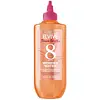What's inside
What's inside
 Key Ingredients
Key Ingredients

 Benefits
Benefits

 Concerns
Concerns

 Ingredients Side-by-side
Ingredients Side-by-side

Propylene Glycol
HumectantAlcohol Denat.
AntimicrobialMyristyl Alcohol
EmollientWater
Skin ConditioningParfum
MaskingDicaprylyl Carbonate
EmollientCetrimonium Chloride
AntimicrobialBehentrimonium Chloride
PreservativeIsopropyl Alcohol
SolventHexyl Cinnamal
PerfumingBenzyl Salicylate
PerfumingLinalool
PerfumingBenzyl Alcohol
PerfumingLimonene
PerfumingAlpha-Isomethyl Ionone
PerfumingHydroxypropyltrimonium Hydrolyzed Wheat Protein
Skin ConditioningCoumarin
PerfumingCitronellol
PerfumingHydroxycitronellal
PerfumingGeraniol
PerfumingTocopherol
AntioxidantArginine PCA
HumectantPhenoxyethanol
PreservativePropylene Glycol, Alcohol Denat., Myristyl Alcohol, Water, Parfum, Dicaprylyl Carbonate, Cetrimonium Chloride, Behentrimonium Chloride, Isopropyl Alcohol, Hexyl Cinnamal, Benzyl Salicylate, Linalool, Benzyl Alcohol, Limonene, Alpha-Isomethyl Ionone, Hydroxypropyltrimonium Hydrolyzed Wheat Protein, Coumarin, Citronellol, Hydroxycitronellal, Geraniol, Tocopherol, Arginine PCA, Phenoxyethanol
Water
Skin ConditioningCetearyl Alcohol
EmollientHydrogenated Castor Oil/Sebacic Acid Copolymer
EmollientGlycerin
HumectantStearamidopropyl Dimethylamine
EmulsifyingLactic Acid
BufferingBetaine
HumectantDicaprylyl Ether
EmollientBehentrimonium Chloride
PreservativePhenoxyethanol
PreservativeMacadamia Integrifolia Seed Oil
Skin ConditioningHydrolyzed Vegetable Protein
Skin ConditioningMacadamia Seed Oil Polyglyceryl-6 Esters
EmollientHydroxypropyl Methylcellulose
Emulsion StabilisingPropylene Glycol
HumectantDipropylene Glycol
HumectantParfum
MaskingSodium PCA
HumectantDecylene Glycol
Skin ConditioningArginine
MaskingSodium Lactate
BufferingSodium Chloride
MaskingCreatine
Skin ConditioningOrbignya Oleifera Seed Oil
EmollientPEG-8
HumectantSodium Hyaluronate
HumectantAspartic Acid
MaskingPCA
HumectantPanthenol
Skin ConditioningPhytic Acid
Glycine
BufferingAlanine
MaskingOlea Europaea Fruit Oil
MaskingArgania Spinosa Kernel Oil
EmollientSimmondsia Chinensis Seed Oil
EmollientPentaclethra Macroloba Seed Oil
EmollientSodium Benzoate
MaskingSerine
MaskingValine
MaskingPEG-8/Smdi Copolymer
Proline
Skin ConditioningIsoleucine
Skin ConditioningThreonine
Sodium Polyacrylate
AbsorbentPalmitoyl Myristyl Serinate
Skin ConditioningPhenylalanine
MaskingHistidine
HumectantCitric Acid
BufferingTocopherol
AntioxidantWater, Cetearyl Alcohol, Hydrogenated Castor Oil/Sebacic Acid Copolymer, Glycerin, Stearamidopropyl Dimethylamine, Lactic Acid, Betaine, Dicaprylyl Ether, Behentrimonium Chloride, Phenoxyethanol, Macadamia Integrifolia Seed Oil, Hydrolyzed Vegetable Protein, Macadamia Seed Oil Polyglyceryl-6 Esters, Hydroxypropyl Methylcellulose, Propylene Glycol, Dipropylene Glycol, Parfum, Sodium PCA, Decylene Glycol, Arginine, Sodium Lactate, Sodium Chloride, Creatine, Orbignya Oleifera Seed Oil, PEG-8, Sodium Hyaluronate, Aspartic Acid, PCA, Panthenol, Phytic Acid, Glycine, Alanine, Olea Europaea Fruit Oil, Argania Spinosa Kernel Oil, Simmondsia Chinensis Seed Oil, Pentaclethra Macroloba Seed Oil, Sodium Benzoate, Serine, Valine, PEG-8/Smdi Copolymer, Proline, Isoleucine, Threonine, Sodium Polyacrylate, Palmitoyl Myristyl Serinate, Phenylalanine, Histidine, Citric Acid, Tocopherol
Ingredients Explained
These ingredients are found in both products.
Ingredients higher up in an ingredient list are typically present in a larger amount.
This ingredient is a preservative and often used for it's anti-static properties. You'll most likely see this ingredient in hair conditioners.
It does not cause irritation or sensitization in leave-on products at 1-5%.
Parfum is a catch-all term for an ingredient or more that is used to give a scent to products.
Also called "fragrance", this ingredient can be a blend of hundreds of chemicals or plant oils. This means every product with "fragrance" or "parfum" in the ingredients list is a different mixture.
For instance, Habanolide is a proprietary trade name for a specific aroma chemical. When used as a fragrance ingredient in cosmetics, most aroma chemicals fall under the broad labeling category of “FRAGRANCE” or “PARFUM” according to EU and US regulations.
The term 'parfum' or 'fragrance' is not regulated in many countries. In many cases, it is up to the brand to define this term.
For instance, many brands choose to label themselves as "fragrance-free" because they are not using synthetic fragrances. However, their products may still contain ingredients such as essential oils that are considered a fragrance by INCI standards.
One example is Calendula flower extract. Calendula is an essential oil that still imparts a scent or 'fragrance'.
Depending on the blend, the ingredients in the mixture can cause allergies and sensitivities on the skin. Some ingredients that are known EU allergens include linalool and citronellol.
Parfum can also be used to mask or cover an unpleasant scent.
The bottom line is: not all fragrances/parfum/ingredients are created equally. If you are worried about fragrances, we recommend taking a closer look at an ingredient. And of course, we always recommend speaking with a professional.
Learn more about ParfumPhenoxyethanol is a preservative that has germicide, antimicrobial, and aromatic properties. Studies show that phenoxyethanol can prevent microbial growth. By itself, it has a scent that is similar to that of a rose.
It's often used in formulations along with Caprylyl Glycol to preserve the shelf life of products.
Propylene Glycol is an odorless, colorless liquid. As a humectant, it helps skin retain moisture. It also aids in delivering active ingredients.
Another role of this ingredient is preventing a product from melting or freezing. Propylene glycol also adds antimicrobrial properties to a product, elongating product lifespan.
This ingredient is considered an organic alcohol and commonly added into both cosmetics and foods.
Those with sensitive skin or conditions may develop a rash when using this ingredient.
Learn more about Propylene GlycolTocopherol (also known as Vitamin E) is a common antioxidant used to help protect the skin from free-radicals and strengthen the skin barrier. It's also fat soluble - this means our skin is great at absorbing it.
Vitamin E also helps keep your natural skin lipids healthy. Your lipid skin barrier naturally consists of lipids, ceramides, and fatty acids. Vitamin E offers extra protection for your skin’s lipid barrier, keeping your skin healthy and nourished.
Another benefit is a bit of UV protection. Vitamin E helps reduce the damage caused by UVB rays. (It should not replace your sunscreen). Combining it with Vitamin C can decrease sunburned cells and hyperpigmentation after UV exposure.
You might have noticed Vitamin E + C often paired together. This is because it is great at stabilizing Vitamin C. Using the two together helps increase the effectiveness of both ingredients.
There are often claims that Vitamin E can reduce/prevent scarring, but these claims haven't been confirmed by scientific research.
Learn more about TocopherolWater. It's the most common cosmetic ingredient of all. You'll usually see it at the top of ingredient lists, meaning that it makes up the largest part of the product.
So why is it so popular? Water most often acts as a solvent - this means that it helps dissolve other ingredients into the formulation.
You'll also recognize water as that liquid we all need to stay alive. If you see this, drink a glass of water. Stay hydrated!
Learn more about Water